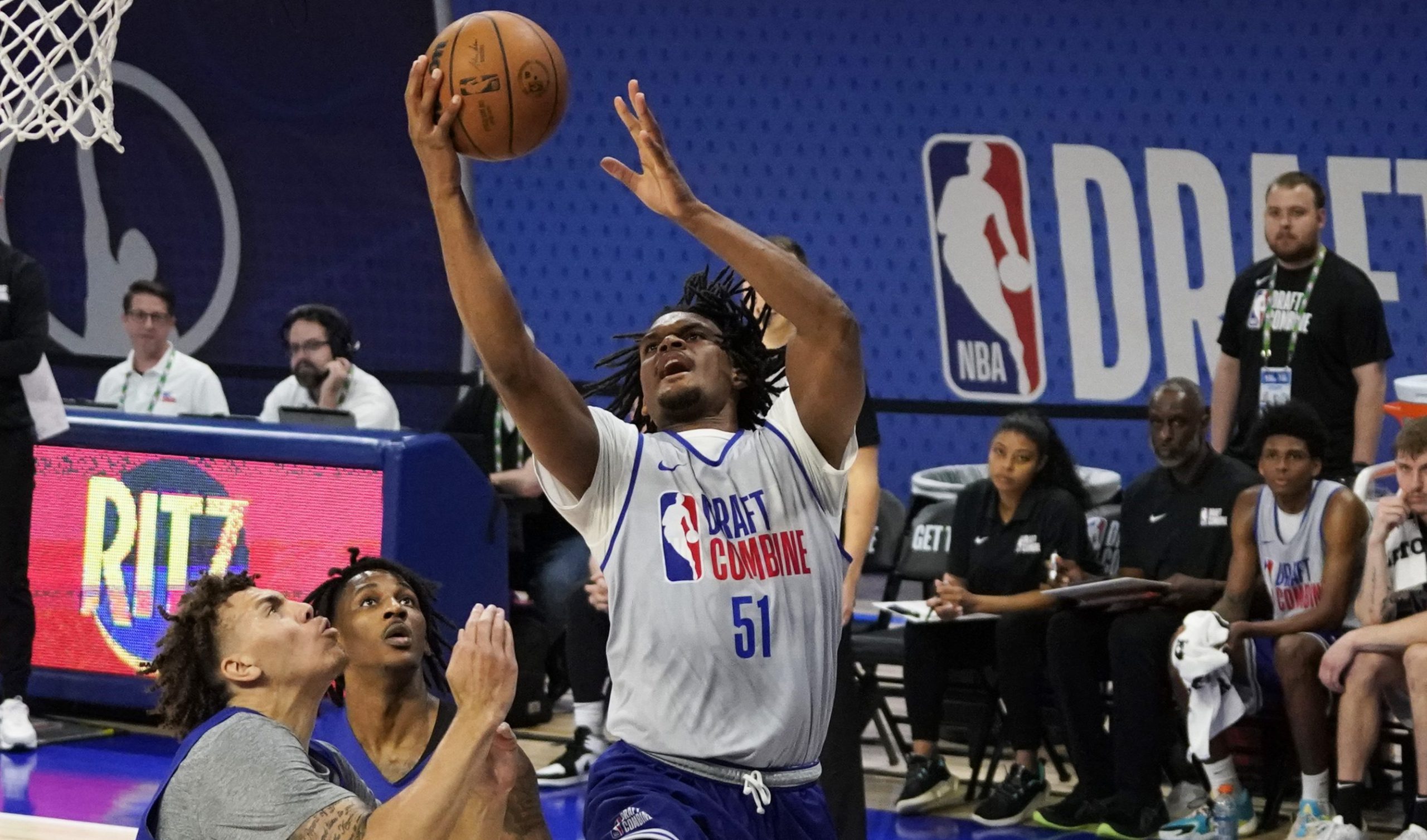Under Maintenance
We deeply apologize for interrupting your reading but Vendetta is currently undergoing some important maintenance! You may experience some layout shifts, slow loading times and dififculties in navigating.

We are less than two weeks away from the start of the 2024 NBA Draft, and today we are going to be previewing former Weber State guard Dillon Jones, who was one of the most productive players in college basketball last season. Let’s hop into it!
Height: 6’4.50″ (6’11″ wingspan, 8’4.50″ standing reach)
Weight: 236.8 lbs
Age: 22.6
Position: Wing
Jones, a graduate of Sunrise Christian Academy in Wichita, Kan., was a three-star prospect in the 2020 recruiting class, according to 247Sports. He was the No. 444 player in the entire country and the No. 88 small forward in the class. He was the seventh-best player in Kansas, behind the likes of Ty Berry, Tyrin Lawrence, Jayden Stone, Collin Moore, K.T. Raimey and Jeremiah Oden.
He chose Weber State over Coastal Carolina, College of Charleston, South Carolina State, Presbyterian and Kent State, among others.
Jones appeared in all 23 of the team’s games in the COVID-shortened 2020-21 season, but was in a limited creation role behind guards Isiah Brown and Seikou Sisoho Jawara. He won the Big Sky Rookie of the Year award, averaging 8.2 points, 5.8 rebounds, 2.0 assists and 1.6 steals on 64.6 percent true shooting.
Even though he was always elite on the glass, his role on-ball steadily began to increase–including his last two seasons, where he sported 27.2 and 29.5 usage rates, respectively. The 6-foot-6 wing was the 2023-24 Big Sky Player of the Year in 2023-24 and was a three-time All-Big Sky honoree, being one of the conference’s most productive players throughout his four-year tenure.
Let’s dive into some of his strengths and weaknesses, shall we?
A wise man once said: No rebounds, no rings.
Dillon Jones exited the womb with eight rebounds. You’d be hard-pressed to find many more players in the entire country who were as skilled and as productive as him on the glass–especially on the defensive glass.
Amongst players 6-foot-6 or shorter who played at least 2500 total minutes over the last four seasons, Jones sported the nation’s best defensive rebounding percentage at 32.1 percent … 7.5 percentage points greater than the next-best player (Baylor Scheierman — 24.6), per Stathead. That’s as great of a gap as it was from No. 2 to 36. He also sported the best total rebounding percentage at 18.4 percent (1.1 percent better than the next-best).
Let’s shrink it down to over the last two seasons. Under those same size parameters (min. 1500 MIN), he led in defensive rebounding rate (33.4) and was second in total rebounding rate (18.1), behind only Taeshaud Jackson (18.5).
His career 32.1 defensive rebounding rate was the third-best in NCAA history, according to Stathead.
Rebounding is effort. It’s also knowing where and how to position your body when the ball bounces off the rim. Jones did that as well as anyone with his plus-seven wingspan.
Jones was a primary shot creator his last two seasons at Weber State. He developed into an above-average playmaker. He was also very physical when he wanted to get into the lane, showing he could finish through bigger defenders with either hand. He was also very crafty with his handle with an array of crossovers and in-and-out dribbles to keep defenders honest.
Jones’ defense at the point-of-attack stood out to me way more at the combine than it did on his Weber State film. He showed he was capable of defending multiple positions, where he utilized his lateral quickness, great length and bulky frame to make it difficult for opposing ballhandlers. The former three-star recruit always had good dexterity and a hunger for the rock that I appreciated.
All that said, Jones isn’t the best vertical athlete, playing mainly below the rim. That could hurt his rim-finishing capabilities, even though he shot 61.4 percent in that area in his last season, per Barttorvik.
His on-ball responsibilities limited his 3-point shooting over his final two seasons, knocking down only 31.3 percent of his 3.6 attempts–despite sporting an 83.6 free-throw percentage over that timeframe. I expect the former to improve because he won’t be tasked to create as much, though I am interested to see how he develops more as an off-ball player in a different context.
Jones doesn’t have elite burst and will be going up against far better athletes. Does he lean into his physical nature? How does he adjust to that? It’s not a huge area of concern–just a question.
He also struggled with turnovers at times and still has room to develop as a creator. I think he can improve, but it was a work in progress throughout the entirety of his collegiate career … at least he had plenty of on-ball reps, albeit against subpar competition (for the most part).
I like Jones and I was very impressed with what I saw at the combine. He may not be the greatest athlete on the floor but the dude knows how to play basketball. He can hoop and, despite the age, I think he can really help a team out within his first few seasons in the right situation. You don’t blow your nose at players who were that good on the glass and who continued improving in multiple areas elsewhere.
***
Subscribe to Vendetta’s Twitch
Subscribe to Vendetta’s YouTube
Check out the Vendetta Shop
Click here for more NBA content